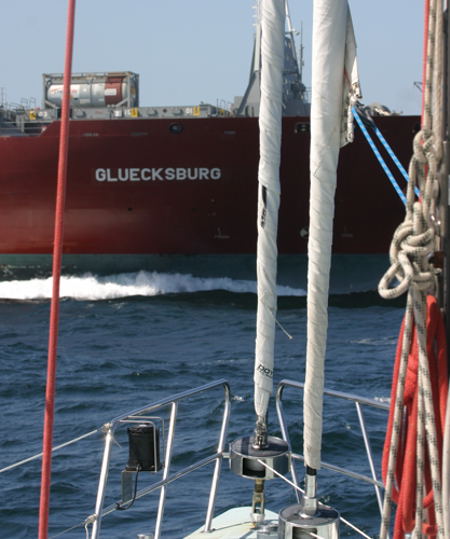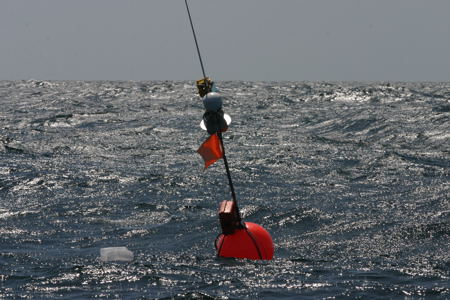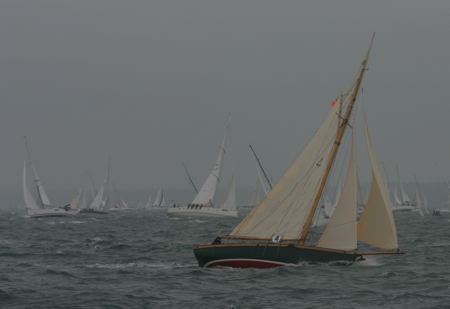Having completed the harbour porpoise survey the R/V Song of the Whale journeys to the Channel Island of Alderney, once more with a new visiting researcher, Fabrizio Borsani. Fabrizio is Italian, and first worked with the SOTW team in the Mediterranean in 1994; he is now studying for a PhD with Prof Paul White’s group at the University of Southampton. We begin a new project, to develop a low cost and simple field methodology to measure the sound profiles of shipping traffic, the results of which will be reported back to the International Maritime Organisation’s Marine Environment Protection Committee (MEPC) .
There is a scarcity of data on the variability of ship noise under real operating conditions and it is unclear how factors such as loading, speed and vessel type act together to change the noise emitted. The literature gives examples for individual ships but there is little information on the variation between vessels. The data collected during this work at sea under real-life conditions will be used to quantify the variability in noise (in a chosen frequency band) from various types of ship, which will help to identify which are most likely to be the major contributors to ocean noise overall.
This project has required a lot of preparation, including the building of two new hydrophone systems, one very sensitive calibrated hydrophone to deploy from the Song of the Whale and the second from a Nauti-buoy (autonomous) system, complete with its own AIS beacon and GPS recorder.
Continuing challenges with the weather mean that we manage 3 full days of data collection in a variety of sea states and wind conditions. The learning curve is steep on the first day, discovering the feasibility of our intended methodology within the constraints of being offshore and liaising with passing vessels. As the days move on and the weather improves, it is clearly evident how much added low frequency noise is created by the drift of our vessel and increased sea state. We have several very cooperative vessels on the second and third day, which not only provide us with in-depth information about the state of their load and draft but also pass within just a couple hundred metres of us – tending to make the captain very uncomfortable! Recordings are made, photos taken and data processed, and adrenaline levels are high as these huge, 200 metre long cargo and tanker vessels pass close by with waving crew and a following huge wash.
We obtain a number of good recordings of a variety of vessels types and sizes and will be able to compare sound profile results between our buoy, the calibrated hydrophones deployed from SOTW and Fabrizio’s hydrophone. Now the hard work ahead is to analyse the data and adapt the previous standardised IMO methodology, reporting back to the IMO MEPC and making recommendations based on the results of this fieldwork.

As we come to the end of the project, approaching Lymington, the mist on the horizon is filled with sailing vessels. Via the radio we learn that as we pass the Isle of Wight we will cross through the Round the Island Race – the wrong way! 1,800 boats are around us tacking and gybing ,vying for the front of the pack, as Jim skilfully slaloms through the fleet of vessels – quite an impressive end to our Channel surveys.


Sorry, comments are closed for this post.